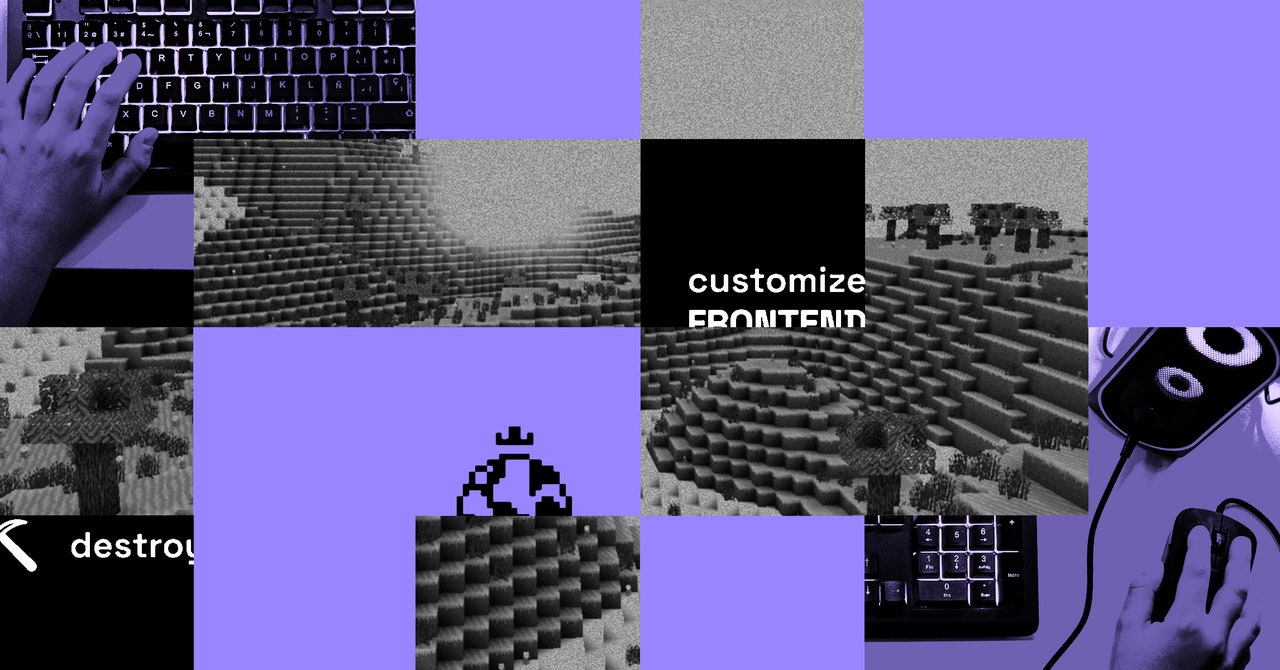OPCraft was built to demonstrate such blockchain-related functions, and also to demonstrate a toolkit developed by 0xPARC’s Lattice for building on-chain games. Conventional video games are often built using game engines such as Unreal Engine that speed up work by processing lower-level details of the programming of 3D environments and other components. OPCraft is built using software that Lattice developed called MUD, an “on-chain game engine”.
Glibert and a fellow Lattice engineer, who goes by the pseudonym Alvarius, built MUD after putting effort into building their own on-chain game. The name borrows an acronym for multi-user dungeon, a genre of multiplayer virtual game worlds that originated in the 1970s and inspired online role-playing games such as Eva online. The crypto-era MUD is designed to handle tricky challenges such as keeping each player’s software in sync with the blockchain and adding new content to a game.
Eat Drain Arson
Last fall, Glibert’s team hosted a 12-week Autonomous Worlds Residency in London where 45 participants, including Morris and Emerson Hsieh, built game prototypes using MUD. Most resembled conventional multiplayer games, in the same vein as OPCraftonly one named Eat Drain Arsonhinted at the possibility for on-chain worlds to take new directions.
The prototype featured a floating, skeletal goblin. In the demo, the game’s creators, Arthur Röing Baer and his co-creator, who goes by the pseudonym GVN, had the goblin perform simple actions such as eating, making fire, moving around a simple map, and collecting a finite resource that becomes sludge named.
The goblin’s world – and even the point of the game – is still under construction. But it will be designed to encourage players to form cooperative groups if they want to progress. The developers of the game, who call themselves Moving Castles, took inspiration from the online communities that form on Discord servers and Telegram group chats. They hope the game can create collectives that exist outside of the game, such as an in-game organization that has the ability to move to another digital place or platform. “You start in a limited world that facilitates its creation, but is not limited by it in the long run,” says Baer.
MUD-based experiences not only seek to prove new approaches to gaming, but also push the boundaries of blockchain technology. The creators of Ethereum originally promised a “world computer” that could run anything, including games, on the decentralized network that powers the system. That would provide an alternative to conventional, centralized cloud computing and ensure that services cannot be shut down.
The downside is that running software on the blockchain in this way is currently slow and expensive. OPCraft used a cryptographic system called a “rollup” that combines many individual transactions and periodically links a bundle of them to the blockchain.
Lattice teamed up with OP Labs, a startup developing rollup technology, for the OPCraft demonstration. The game, which saw more than 100 players active at the same time, was a “stress test at the most realistic but also the most innovative level,” said Annie Ke, head of protocol partnerships at OP Labs. She hopes blockchain games can demonstrate how merging technology can make blockchains cheaper and easier to use, making ideas such as mainstream decentralized financial services and even more general applications, such as blockchain-based organizations, more viable.

